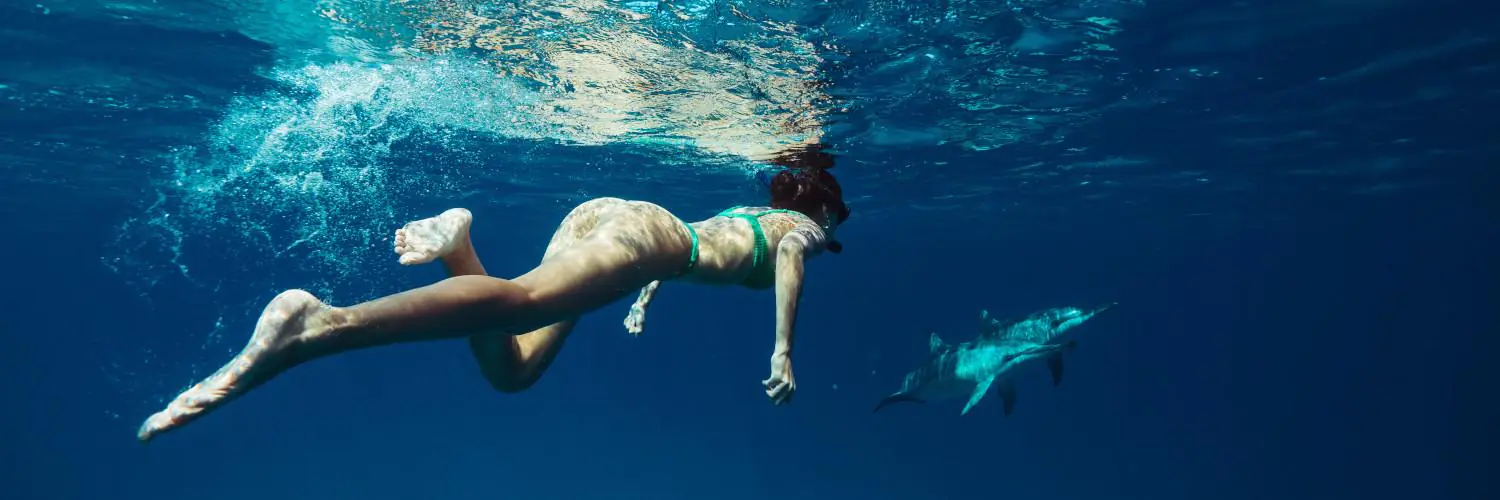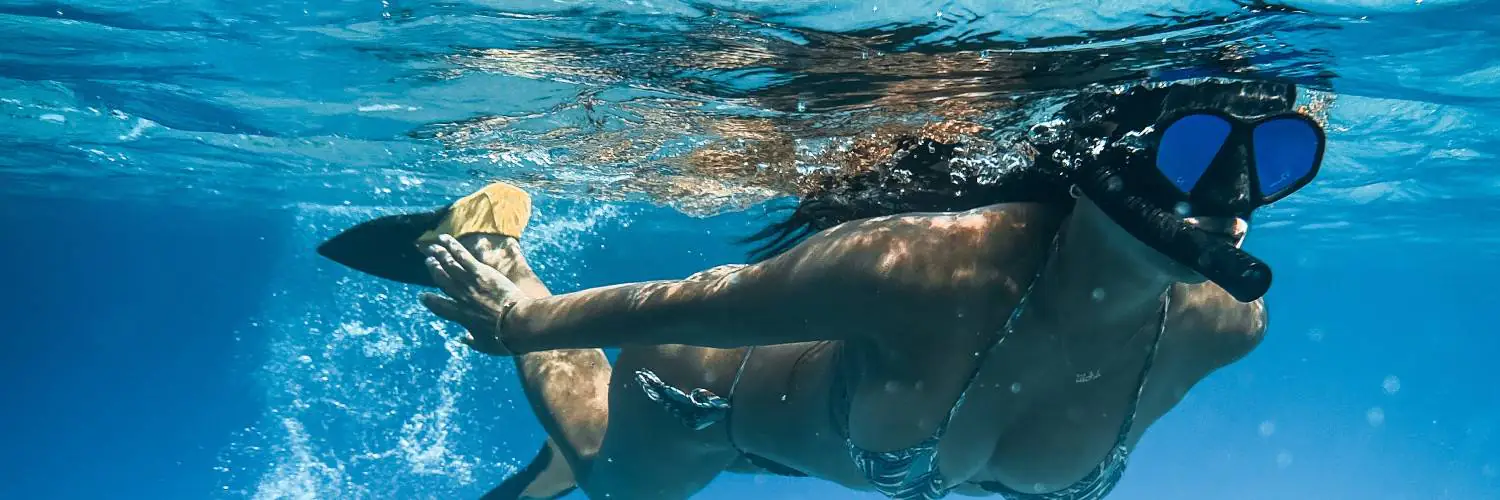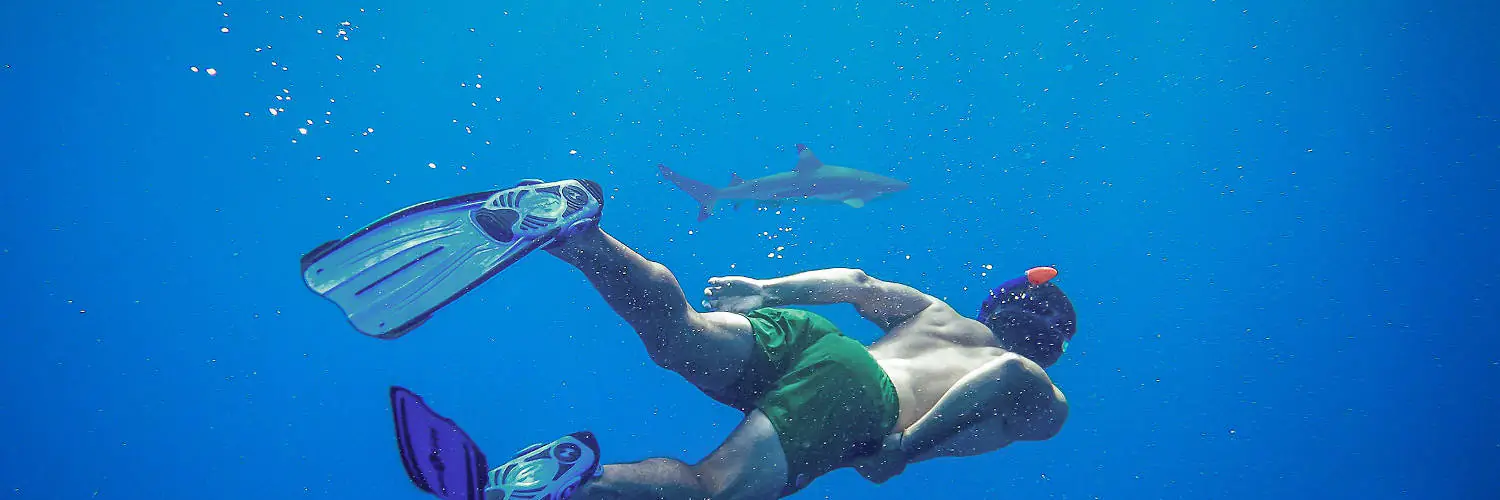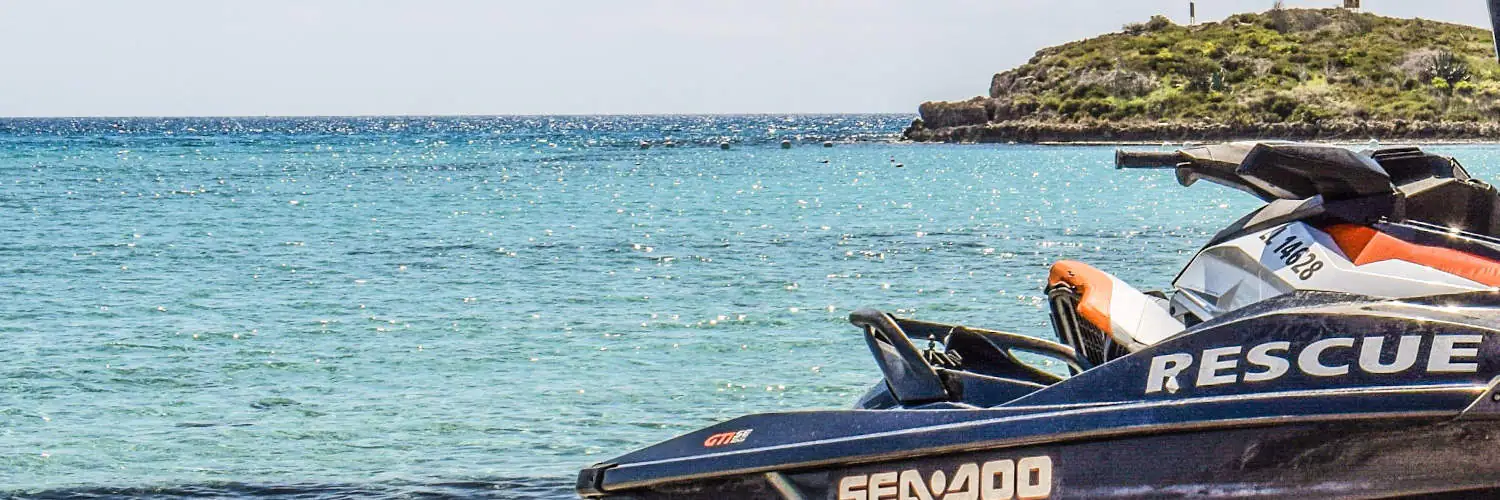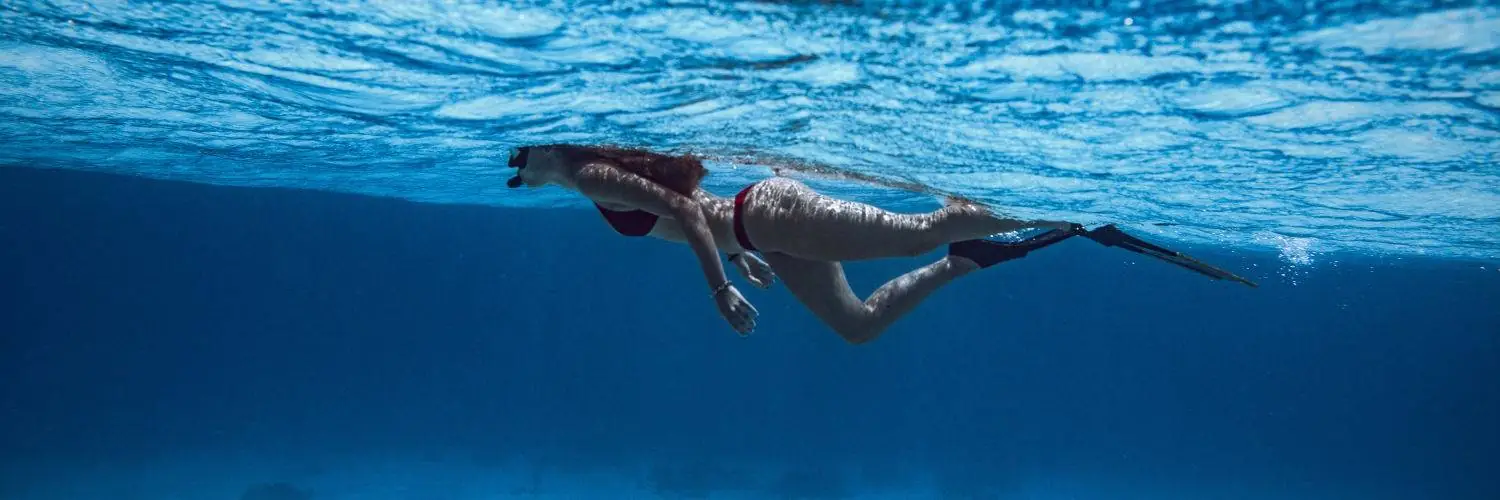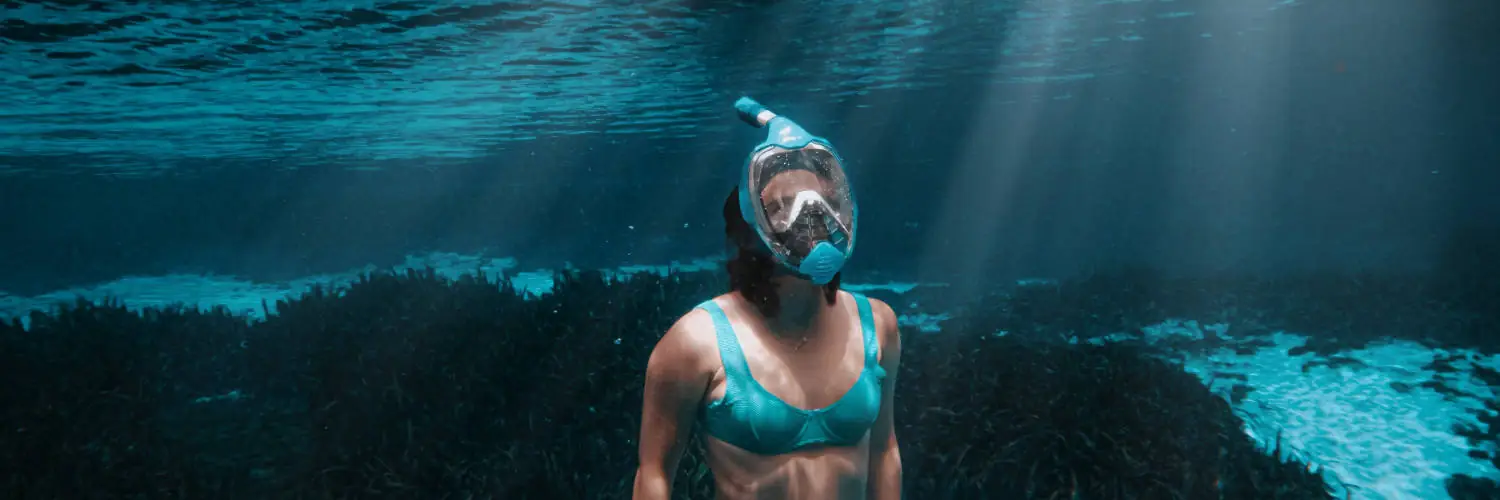A well-liked water sport that lets people see marine life in its natural habitat is snorkeling. Unlike scuba diving, which involves going deep underwater, snorkeling typically takes place at the surface. The snorkeler is equipped with a diving mask, a shaped breathing tube called a snorkel, and usually swimfins. By floating face-down at the surface of the water, snorkelers can breathe through the snorkel while admiring the marine ecosystem below them.
However, it’s a common misconception that snorkeling restricts one to just floating on the surface. Skilled snorkelers sometimes swim down to see sea life or the sea floor. These dives are brief, and snorkelers must hold their breath while submerged because the snorkel tube is not designed to provide air underwater.
The experience of snorkeling can be serene and educational. Individuals have the opportunity to witness ecosystems rarely seen in daily life. Additionally, snorkelers can experience more than just the surface of the water when the right conditions and technique are followed, allowing them to have a quick glimpse of the world below the waves.
Table of Contents
Understanding Snorkeling Basics.
People have a rare opportunity to see marine life in its natural habitat when they go snorkeling. To ensure a safe and enjoyable experience, it’s crucial to have the right equipment and master fundamental techniques.
Snorkel Equipment Essentials
Mask: A snug-fitting snorkel mask is essential to see underwater clearly. Masks should be tried on to ensure a comfortable seal that prevents water from leaking in.
Snorkel: Breathing is possible while floating face-down on the water’s surface thanks to the snorkel tube. There are two main types:
- Dry Snorkel: Features a valve that closes when submerged to keep water out.
- Semi-Dry Snorkel: Has a splash guard to reduce water entry but does not seal completely when submerged.
Fins: Properly fitting fins assist in efficient movement through the water, making it easier to swim with less effort.
Fit and Comfort: All gear should fit well to avoid discomfort or water intrusion, enhancing the snorkeler’s safety and experience.
Key Snorkeling Techniques
Breathing: They should breathe calmly and deeply through the snorkel tube, maintaining a relaxed rhythm to conserve energy and remain at ease.
Buoyancy: To achieve neutral buoyancy, they may need to use a buoyancy control device or practice controlling their lungs’ air volume through deep breaths and measured exhalation.
Movement: Kicks that are soft and flowing assist in propelling the snorkeler while minimizing energy loss and disturbing the marine environment.
Ear Equalization: As they dive below the surface, the snorkeler should clear their ears by pinching the nose and gently exhaling to balance the underwater pressure, enhancing comfort.
Note: Snorkelers need to watch where they are and care for sea creatures by not bothering them.
Advanced Snorkeling Considerations
Expert snorkelers frequently look for opportunities to get up close and personal with a variety of marine environments. They should always prioritize safety while also learning how to interact with more challenging aspects of nature.
Encountering Marine Life
Seeing sea animals when going deep in water, knowing how to deal with them is very important. People using snorkels often see fish and coral, and sometimes big animals like sharks or whale sharks. To ensure a safe and respectful encounter:
- Visibility: Always make sure you are visible to marine life to avoid startling them. Wearing a bright rash guard or life vest can help.
- Approach: Be calm and avoid rapid movements that can distress creatures.
- Touching: Touching marine life is strongly discouraged as it can harm them and the sensitive coral reefs.
Safety and Precautionary Measures
The depth one can safely snorkel without diving equipment is generally limited by their ability to hold their breath and withstand water pressure. To manage the depth and stay safe:
- Temperature: Be mindful of the water temperature. A wetsuit may be necessary to protect against cold.
- Flippers: Use flippers to navigate efficiently without overworking your legs and arms.
- Pressure: Learn to equalize pressure in your ears as you descend to avoid discomfort or injury.
- Buddy System: Always snorkel with a buddy and keep an eye on each other for safety.
- Currents: Check weather reports and heed warnings about strong currents to avoid being swept away.
- Hyperventilate: Do not hyperventilate before diving; it increases the risk of shallow water blackout.
These considerations help snorkelers negotiate their adventure depths responsibly and enjoyably while preserving the essence of nature they come to admire.


